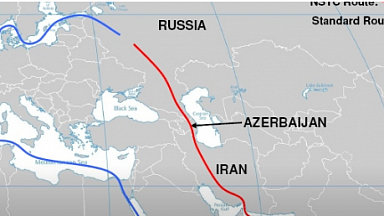Building new logistics required prompt decisions to create new transport routes through friendly and neutral countries that had not acceded to the sanctions against Russia. The search for new supply chains, including multimodal ones, and settlement schemes require a new level of flexibility and new logistics solutions for all involved economic agents. The greatest changes are expected in cargo turnover with Russia’s largest trading partners — the European Union and China.
For the Eurasian railway route, which passes through the territory of Belarus, Russia and Kazakhstan, the new international political conditions have become a challenge. Despite the absence of sanctions against rail freight and the route operator, the current working environment has led to a 22% drop in container traffic on the China-Europe-China route by 35% in 2022. However, the sharply increased demand for transit traffic within the EAEU, primarily from Russia and Belarus to China and vice versa, compensated for the drop in transit cargo volumes.
China’s exports to Russia in value terms during the crisis also remained at their 2019 level (about $50 billion), and by 2022 grew to $76 billion. Export growth in value terms over the past year was 13%.
The structure of China’s exports to Russia is quite diversified, and most of the goods (81% by value and 58% by tonnage) are the result of high-value-added manufacturing. Given the raw material-heavy structure of Russia’s exports to China, this causes asymmetry in the cargo flows between countries: despite a relatively even trade balance in value terms, the physical volume of Russia’s exports to China is many times higher than the volume of imports from there. Thus, in 2020, Russia’s physical exports to China amounted to 171.2 million tons, while imports amounted to 10.9 million tons.
The asymmetry of cargo flows is due to differences in the economic development and production structure of the two countries. China has a more developed manufacturing base, which allows it to export more finished goods to Russia. In turn, Russia is the largest exporter of energy resources such as oil and gas, which dominate its export structure.
In terms of modes of transport, the greatest impact of the sanctions fell on air and road traffic. Railway and maritime transport were affected to a lesser extent, however, significant transformations of the transport and logistics services market itself — fluctuations in the ruble exchange rate, the withdrawal of large Western carriers, problems with insurance, changes in the configuration of cargo flows in favor of the East — had an impact on the cost of transportation. While the commodity structure of Russia’s foreign trade turnover was maintained, there is a significant change in its geography. Products from Western countries are gradually being replaced by goods from Asia. Thus, there is an increase in imports of pharmaceutical products and pharmaceutical raw materials from India and China, as well as major global manufacturers and exporters of these products. Significant changes are taking place in the automotive components market: against the backdrop of curtailing programs for the supply of original spare parts to Russia, the law on parallel imports has opened up new channels for the supply of products.
In connection with the above, the importance of developing trade with China, the largest supplier of products to the Russian market, and its impact on the transport and logistics industry is growing. This review provides an analysis of current exports from China to Russia, the structural features, main changes and growth points identified in 2022, as well as an assessment of the potential of railway freight traffic in this direction.





